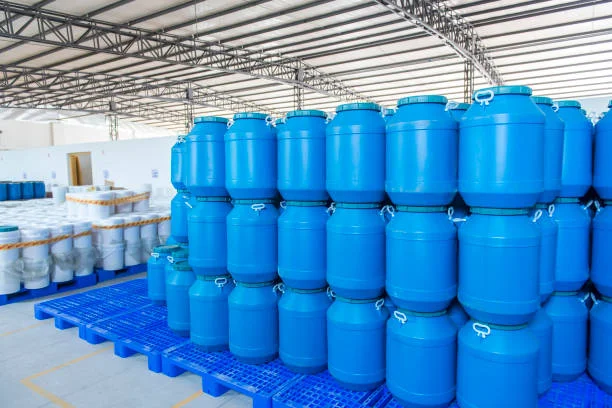We at Innoveda Chemicals, pride ourselves on being at the forefront of sustainable solutions in chemical industries. Our commitment extends beyond delivering quality products to actively contributing to environmental preservation efforts. One such crucial aspect of our work lies in elucidating the role of caustic soda in wastewater treatment processes. As a leading caustic soda supplier in Dubai, we understand the significance of this chemical in ensuring cleaner and safer water for all.
pH Adjustment:
- Caustic soda, also referred to as sodium hydroxide (NaOH), is a fundamental agent utilized in wastewater treatment plants for pH adjustment purposes. Its chemical properties make it an ideal candidate for neutralizing acidic compounds present in wastewater streams.
- By counteracting acidic components, caustic soda aids in the stabilization of pH levels, ensuring they remain within the desired range suitable for subsequent treatment processes to take place effectively.
- This crucial pH adjustment is pivotal as it facilitates the efficient removal of various pollutants and contaminants from the water matrix. Contaminants, when subjected to optimal pH conditions, become more amenable to treatment and subsequent removal.
- The utilization of caustic soda for pH adjustment not only enhances treatment efficiency but also ensures compliance with regulatory standards governing wastewater discharge. Maintaining the appropriate pH levels is essential for mitigating environmental impacts and safeguarding public health.
Precipitation of Heavy Metals:
- Heavy metals present in wastewater pose serious risks to both human health and the environment, highlighting the critical need for effective treatment methods. Caustic soda emerges as a valuable ally in this endeavor, particularly in the precipitation of heavy metals like lead, cadmium, and chromium.
- Through the process of raising the pH of wastewater, caustic soda facilitates the conversion of soluble heavy metal ions into insoluble precipitates. This transformation is crucial as it renders the heavy metals less mobile and thus easier to manage during subsequent treatment steps.
- Once precipitated, these heavy metal particles can be efficiently separated from the water matrix using sedimentation or filtration techniques. This step significantly contributes to the purification of wastewater, resulting in a cleaner effluent ready for discharge or reuse.
- The role of caustic soda in precipitating heavy metals underscores its importance in ensuring the overall effectiveness of wastewater treatment processes. By mitigating the environmental impact of heavy metal contamination, caustic soda plays a vital role in protecting ecosystems and public health alike.
Emulsification and Surfactant Removal:
- Industrial wastewater poses unique challenges due to the presence of emulsified oils and surfactants, which resist conventional treatment approaches. Caustic soda emerges as a versatile solution to tackle these complexities effectively.
- By leveraging its emulsification properties, caustic soda facilitates the breakdown of oils into smaller, more manageable droplets. This process enhances the efficiency of subsequent separation techniques, such as sedimentation or flotation, enabling the removal of oil contaminants from the water.
- Furthermore, caustic soda plays a crucial role in surfactant removal by disrupting the chemical bonds that bind these compounds together. This action effectively destabilizes surfactants, making them more susceptible to removal through filtration or adsorption processes.
- The ability of caustic soda to address both emulsified oils and surfactants underscores its significance in industrial wastewater treatment. By enhancing the efficacy of oil and surfactant removal, caustic soda contributes to the production of cleaner effluent and ensures compliance with regulatory standards.
Enhanced Coagulation and Flocculation:
- Coagulation and flocculation serve as vital processes in wastewater treatment, crucial for the removal of suspended particles from the water. Caustic soda plays a pivotal role in enhancing these steps by optimizing the pH conditions necessary for effective flocculation.
- By adjusting the pH, caustic soda creates an environment conducive to the formation of larger and denser flocs when combined with coagulants like aluminum or iron salts. This optimization results in improved particle aggregation and faster settling rates, ultimately enhancing the clarity and quality of the treated water.
- Moreover, caustic soda’s emulsification properties come into play when dealing with challenging contaminants like emulsified oils in industrial wastewater. It aids in breaking down these oils into smaller droplets, making them easier to separate from the water matrix during subsequent treatment stages.
- Additionally, caustic soda contributes to surfactant removal by disrupting the chemical bonds that bind these compounds together. This action increases the efficiency of surfactant removal processes, ensuring thorough treatment and cleaner effluent discharge.
Conclusion:
To sum up, the role of caustic soda in wastewater treatment processes cannot be overstated. As a caustic soda supplier in Dubai, we recognize its indispensable contribution to ensuring the efficiency and efficacy of treatment systems worldwide. From pH adjustment to heavy metal precipitation and emulsification, caustic soda plays a multifaceted role in transforming contaminated wastewater into clean, reusable water resources. At Innoveda Chemicals, we remain committed to promoting sustainable solutions that safeguard our environment for generations to come.



